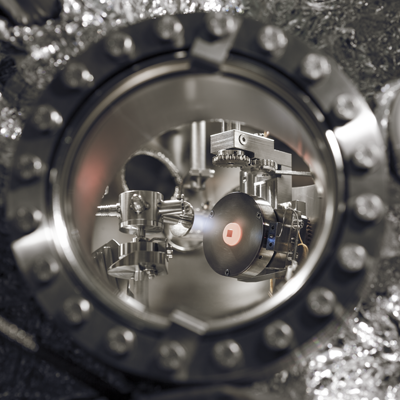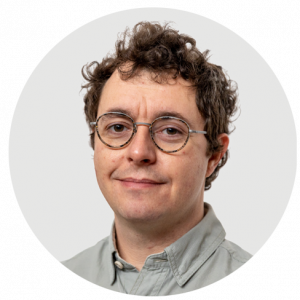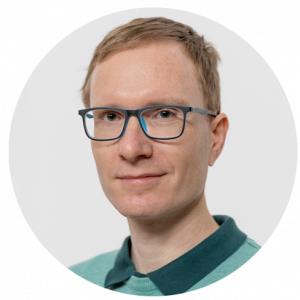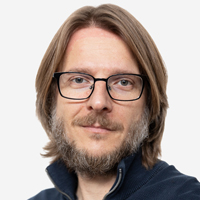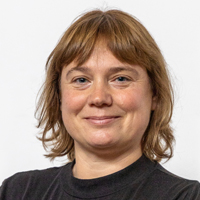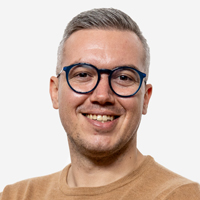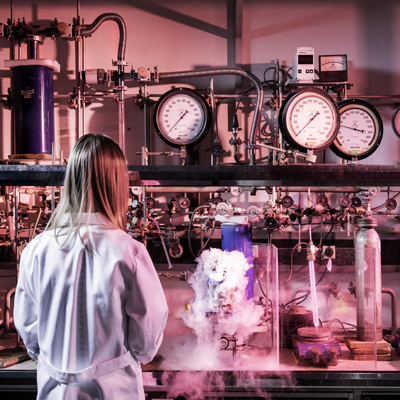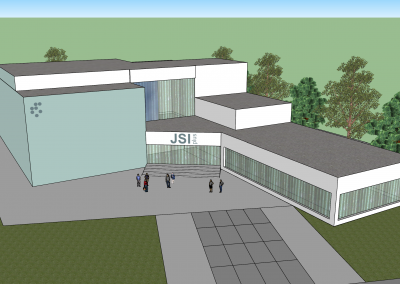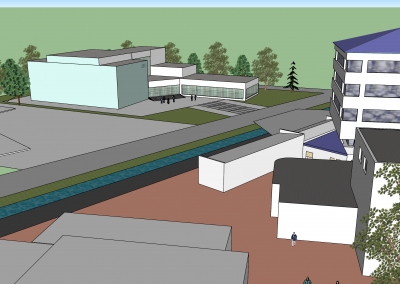MISSION
Center for Light, Matter, and Quanta (JSIplus) will enable Slovenia to leverage its outstanding scientific excellence in the high technology fields of physics, chemistry, and materials to become a world leader in the application of quantum phenomena to the fields of medicine, electronics, energy, and sustainability.
VISION
To establish Slovenia as a European leader in the field of quantum technologies within ten years. To spark a new era of cooperation between national organisations and initiatives.
Define new areas of opportunity for Slovenia to assume leadership positions in research and innovation.
VALUES
Digital transformation, social impacts and cross-sector entanglement. The value of quantum technology is inestimable as the range of applications seems to be limitless.
GOALS
To create a physical space where research, industry, and the general public can meet and collectively address emerging global challenges in medicine, electronics, energy, and sustainability.
Fundamental science invents the future
Strengthening cooperation between the research and technological sector and the economy is most pronounced in environments where SMEs are provided with access to research infrastructure and leading scientists passionate about their work.
Research is key to addressing the now-urgent challenges of climate change, ecological collapse, and future energy needs, while also imagining and building a better future, linking the country’s scientific excellence to new innovations, products, and processes that grow the national economy and aid its transition to becoming more knowledge-based and internationally competitive.
Fundamental science invents the future
JSIplus will define new areas of opportunity for Slovenia to assume leadership positions in research and innovation
Strengthening cooperation between the research and technological sector and the economy is most pronounced in environments where SMEs are provided with access to research infrastructure and leading scientists passionate about their work.
Research is key to addressing the now-urgent challenges of climate change, ecological collapse, and future energy needs, while also imagining and building a better future, linking the country’s scientific excellence to new innovations, products, and processes that grow the national economy and aid its transition to becoming more knowledge-based and internationally competitive.
World-leading research
Outstanding Early Career Researchers
inner-shell chemistry
In his ERC Starting Grant, Matic Lozinšek has been focusing on research of chemical reactions with fluorine under extremely high pressure - over 100,000 bar, enabling the testing of the restrictions currently in force in chemistry. The project is a combination of two specialized experimental and extreme fields of research - the study of substances under extremely high pressures, and research in extreme chemical reactivity. Through his work, JSI aims to establish a new frontier research direction – high-pressure fluorine chemistry, exploring the existence of compounds with elements displaying unusual and exotic formal oxidation states, and even the possibility of inner electronic shell involvement in chemical bonding, hopefully giving birth to the new field of inner shell chemistry.
Matic Lozinšek, ERC Starting Grant
microlasers inside cells
The goal of the ERC Starting Grant project Cell-Lasers is to make novel microlasers from biocompatible and biological materials and implant them into live organisms and even single cells. While various medical implants, including electronic ones, are routinely used nowadays, implantable photonic devices, such as lasers, are part of a very novel research area.
The implantable lasers being developed within this project will provide unprecedented insight into very complex biological processes, with superior sensitivity to various parameters, the ability to image deeper into the tissues, and to track movements of single cells. This will allow us to study the function of organisms in normal states, as well as in states of disease, and provide new non-invasive medical diagnostic techniques.
Matjaž Humar, ERC Starting Grant
superconducting quantum devices
Electronic devices made of nanoscopic semiconducting and superconducting parts are a key platform for building future quantum simulators and computers. Rok Žitko is developing modelling tools for the computer-aided optimization of device properties and the analysis of novel functionality.
Rok Žitko
solid-state cooling with multicaloric materials
Efficient cooling of electronic components is extremely important for future nano- and quantum devices. Hana Uršič investigates multicaloric materials as the active parts of the cooling elements for emerging environmentally friendly refrigeration.
Hana Uršič
personalised trustworthy optimisation
Explainability is a prerequisite for trustworthy optimisation: We need to understand which algorithms work well on which optimization problems and why. Tome Eftimov is investigating this question in black-box optimisation systems by considering personalised, algorithm-specific and problem-specific representations to acquire new knowledge about how optimisation algorithms and problems interact.
Tome Eftimov
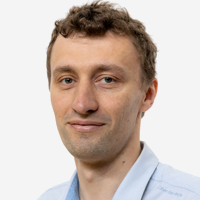 dynamics of complex magnets
dynamics of complex magnets
We develop new techniques for studying the dynamics of complex and non-collinear magnets, which will allow manipulating of magnetic orders on an ultrafast time scale and their engineering on-demand. This is essential for next-generation devices in the fields of data storage and transfer, and predicts numerous possibilities for quantum computing as an alternative to superconducting circuits.
Igor Vaskivskyi
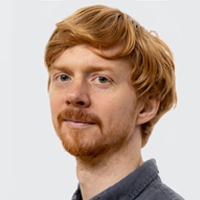 quantum materials out-of-equilibrium
quantum materials out-of-equilibrium
Using light to control materials where quantum effects play a role on macroscopic scales is a key challenge in the development of quantum technologies. Denis Golež is theoretically exploring microscopic mechanisms for material manipulation with light and developing modelling frameworks for comparison with state-of-the-art experiments.
Denis Golež
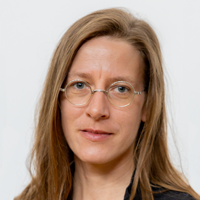 statistical physics of non-equilibrium quantum systems
statistical physics of non-equilibrium quantum systems
Interacting quantum systems, driven out of equilibrium, can access exotic states but are challenging to comprehend. Zala Lenarčič is exploring fundamental mathematical properties and modern numerical tools, like machine learning, to develop effective statistical descriptions of excited systems. This knowledge can guide the design of non-equilibrium protocols using light to engineer peculiar transport properties of quantum materials.
Zala Lenarčič
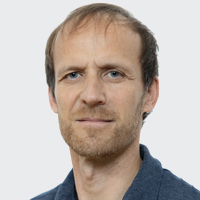 quantum spin liquids
quantum spin liquids
Quantum spin liquids represent an exotic phase of magnetic materials that lacks long-range order even at zero temperature despite strong exchange interactions. They are characterized by strong quantum entanglement that could potentially be exploited for fault-tolerant quantum computation. Andrej Zorko experimentally investigates their realizations on two dimensional geometrically frustrated spin lattices.
Andrej Zorko
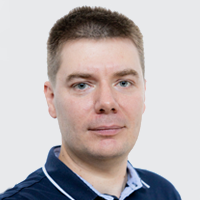 next generation of collaborative robots
next generation of collaborative robots
The development of a next generation of collaborative robots capable of working effectively in the natural environment of humans will have a positive impact in many areas. Tadej Petric explores how biologically plausible robotic controllers could bridge the gap and bring robots closer to us. To reach this level, we must first enable them to perform robust, goal-directed, whole-body motions that are superior to humans and can match or exceed typical industrial robots. This research will therefore lay the foundation for a new generation of collaborative robots that are more aware of their environment and their human partners, which could have profound implications for productivity and assistance capabilities in manufacturing, healthcare, and home environments.
Tadej Petrič
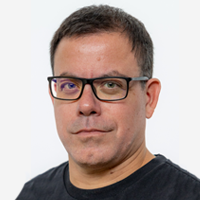 quantum technologies with cold atoms
quantum technologies with cold atoms
Quantum technology is about creating life-changing applications and devices based on the laws of quantum mechanics. It is a multidisciplinary area of research and development involving physics, electronics and engineering. Peter Jeglič is exploring experimental techniques for preparation, control and imaging of cold atoms with a goal to demonstrate atom-based quantum simulators, ultra-sensitive sensors and novel quantum devices.
Peter Jeglič
A response to Slovenia’s biggest challenges
Access to state-of-the-art research infrastructure will elevate the quality of Slovenian research and cooperation with the best international research groups, establish space for cooperation between science and industry, and encourage
students to pursue a research career and remain in Slovenia. JSIplus will become a joint research hub where science (TRL 1-3) and commercial innovations (TRL 6-9) meet to jointly develop new solutions to challenges emerging across prioritized industries of critical importance for the country’s future (medicine, energy, electronics, materials, information and communication technologies, and sustainability).
Why JSIplus?
Igor Muševič
ERC Advanced Grant award for the project LOGOS – Light-operated logic circuits from photonic soft-matter
“We rely heavily on the rapid advances of science and technology for everyday health and well-being. JSIplus is a long-term investment in our future, with an infrastructure that builds on emerging science horizons by ensuring that our young talents can confidently focus on cutting-edge scientific goals.”
Dragan Mihailović
ERC Advanced Grant award for the project TRAJECTORY – Coherent trajectories through symmetry breaking transitions
“Slovenia has a long tradition of scientific excellence and innovation. Wie expect JSIplus to further strengthen this tradition and enable major contributions to European research excellence, to open new horizons for young talents, and to make lasting impact on society.”
Peter Križan
ERC Advanced Grant award for the project FAIME – Flavour Anomalies with advanced particle Identification MEthods
Synergies with Slovenian National Strategies
According to the ‘smart directionality’ approach, JSIplus will contribute significantly to reaching national strategic goals as specified in the Integrated National Energy & Climate Plan, Slovenia’s Smart Specialisation Strategy and Slovenian Industrial Strategy, National Programme for the Promotion, Development and Use of Artificial Intelligence, as well as to the Research Infrastructure Roadmap, the Resolution on Research and Innovation Strategy of Slovenia, and the Operational Programme for the Implementation of EU Cohesion Policy.
JSIplus will directly address critical global challenges including green, digital, materials, and energy transformations, the transition to Society 5.0, and will have strong synergies with the European Research Area.
It will strengthen collaborations within Slovenia between research organizations and industry, including SMEs and entrepreneurs.
The initiative will attract top scientific talent from around the world to Slovenia, while also providing vital and challenging new career paths for young researchers.
JSIplus will modernize and internationalize Slovenian science and research infrastructure.
It will form a collaboration center on the highest global level in Slovenia, and place it within the European agenda for developing research and tehnology infrastructures.
It will support accelerated research training, and life-long learning in critical fields and emerging skills.
The initiative will build and upgrade critical research infrastructure at an accelerated pace to achieve the goal of attaining critical mass for large research infrastructure in priority scientific areas contributing to a balanced development of society and the national economy.
It will encourage and nurture bottom-up scientific inquiry cluster around emerging societal challenges, including support for ERC grantees, further increasing external funding and inward investment.
Key-enabling technologies
| Physics | Materials |
| Chemistry and biology | Information and communication technologies, artificial intelligence |
These intersect three main research topics:
| Light, optics, photonics |
| Matter, materials, electronics |
| Quanta, principles driving research breakthroughs |
… and specific research concentrations pioneering the concept of materiomics, the study of advanced materials:
- Highly coherent quantum systems and simulations
- Low-temperature quantum physics, including superconductors
- Coupled light-matter systems
- Plasma processing on the atomic level
- Quantum sensing and advanced sensorics
- Inner-shell chemistry and radically new materials
- Quantum effects in nanomaterials
- Design of materials on the basis of their quantum properties
- Automated discovery of new materials
- Interaction of light and particles with biological systems and novel biomaterials
Key-enabling technologies
| Physics | |
| Chemistry and biology | |
| Materials | |
| Information and communication technologies, artificial intelligence |
These intersect three main research topics:
| Light, optics, photonics | |
| Matter, materials, electronics | |
| Quanta, principles driving research breakthroughs |
… and specific research concentrations pioneering the concept of materiomics, the study of advanced materials:
- Highly coherent quantum systems and simulations
- Low-temperature quantum physics, including superconductors
- Coupled light-matter systems
- Plasma processing on the atomic level
- Quantum sensing and advanced sensorics
- Inner-shell chemistry and radically new materials
- Quantum effects in nanomaterials
- Design of materials on the basis of their quantum properties
- Automated discovery of new materials
- Interaction of light and particles with biological systems and novel biomaterials
Harnessing the power of AI
We will harness the power of artificial intelligence (AI) methods, such as machine learning and meta-heuristic optimization, using high-performance computing to distill research data into novel scientific knowledge. We will develop and utilize advanced methods of explainable AI to facilitate and accelerate the process of scientific discovery, arriving faster from quantum properties to new functional materials that address some of society’s grandest challenges. With explainable AI, we will support both open science and collaboration between future human and robot scientists.
We will explore the interactions of quantum technologies and artificial intelligence to achieve synergetic effects in the design of radically new materials and drugs, advanced medical diagnostics, and many other applied breakthroughs. With the use of quantum computing, key AI approaches based on machine learning, and optimization we will reach unprecedented performance, essential for the success of AI in demanding real-world applications. With the help of AI we will enhance quantum computing processes.
JSIplus has very focused goals:
To establish Slovenia as a European leader in the field of quantum technologies within ten years
To leverage recent scientific successes and breakthroughs for the benefit of Europe’s economy and quality of life
To provide appropriate infrastructure for the Jožef Stefan Institute to grow and assume its place among the best research institutions in the world
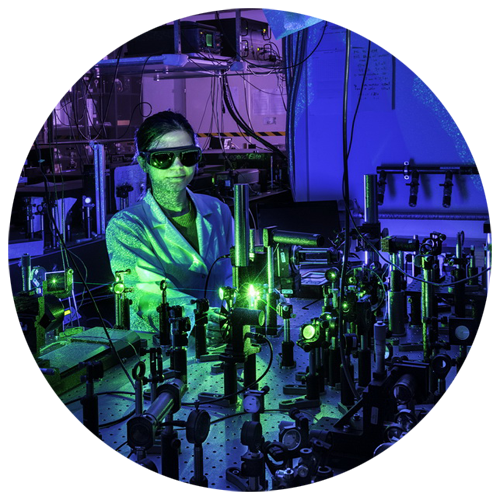
To create a physical space where research, industry, and the general public can meet and collectively address emerging global challenges in medicine, electronics, energy, and sustainability
To spark a new era of cooperation between national organisations and initiatives
To attract and retain
top scientific talents
To establish Slovenia as a European leader in the field of quantum technologies within ten years
To leverage recent scientific successes and breakthroughs for the benefit of Europe’s economy and quality of life
To provide appropriate infrastructure for the Jožef Stefan Institute to grow and assume its place among the best research institutions in the world
To create a physical space where research, industry, and the general public can meet and collectively address emerging global challenges in medicine, electronics, energy, and sustainability
To spark a new era of cooperation between national organisations and initiatives
To attract and retain
top scientific talents

Large research infrastructure at JSI
The funds invested in large research and technology infrastructure in Slovenia are well below the European average. Various studies have found that due to inconsistent funding, it has not been possible to build a sound technological foundation for research, development and knowledge valorisation.
Applications and industry
It is critical that the world-leading research emerging from JSIplus reaches Slovenian businesses, SMEs, and investment communities. For this reason, JSIplus’s scientific focus must be well aligned with national economic development priorities, Smart Specialization and Slovenian Industry Strategy.
JSIplus will further strengthen relationships with industry and establish lab-to-life pipelines of high economic value in the fields of:
- New materials and electronics for sensing, computing, and communication
- Advanced functional materials
- Energy conversion and future green technologies; nanoengineering of materials for energy
- Quantum computing and communications
- Environmental, geological, and ecological sensing
- Ecologicaly friendly processing with light and plasma
- Biological systems, biomedicine, nuclear medicine, personalized and novel diagnostics with innovative treatment technologies
Applications and industry
It is critical that the world-leading research emerging from JSIplus reaches Slovenian businesses, SMEs, and investment communities. For this reason, JSIplus’s scientific focus must be well aligned with national economic development priorities, Smart Specialization and Slovenian Industry Strategy.
JSIplus will further strengthen relationships with industry and establish lab-to-life pipelines of high economic value in the fields of:
- New materials and electronics for sensing, computing, and communication
- Advanced functional materials
- Energy conversion and future green technologies; nanoengineering of materials for energy
- Quantum computing and communications
- Environmental, geological, and ecological sensing
- Ecologicaly friendly processing with light and plasma
- Biological systems, biomedicine, nuclear medicine, personalized and novel diagnostics with innovative treatment technologies
New buildings, new beginnings
JSIplus will be a long-term, high-investment project:
- New building and infrastructure facilities including cleanrooms and noise-free laboratories
- Advanced equipment and research devices including ultra-high vacuum facilities and equipment for research under extreme conditions
- Highly automated platforms for research in materials design, prototyping, and characterization, including robotic labs and AI embedded knowledge discovery systems
- Initiatives for co-working with staff from other key Slovenian research organisations to work on critical joint projects of national interest, such as those related to ecology, climate change, and energy
- Optimal exploitation of opportunities supported by basic and applied research
- Increase the awareness of science as a driving force of transition towards a greener and fairer society, in line with EU Valorisation Policy
JSIplus will have:
- New organisational principles for interdisciplinary research clusters and management units
- Modular research and scientific discovery areas, including open rapid prototyping facilities and open science and open innovation support
- Flexible spaces specifically for ERC grant holders to expand and grow their research and team
- A rapid prototyping platform open for industry collaboration, and dedicated spin-in spaces for co-working with industry and SMEs
- Co-working spaces for long-term collaborations with stakeholders across the academic, research, industry, and government value chains, as well as with leading international research labs
- Public interaction and citizen science spaces
- Smart, green, as well as energy and thermally efficient facilities toward zero carbon goals, aligned with new European Bauhaus initiatives
New buildings, new beginnings
JSIplus will be a long-term, high-investment project:
- New building and infrastructure facilities including cleanrooms and noise-free laboratories
- Advanced equipment and research devices including ultra-high vacuum facilities and equipment for research under extreme conditions
- Highly automated platforms for research in materials design, prototyping, and characterization, including robotic labs and AI embedded knowledge discovery systems
- Initiatives for co-working with staff from other key Slovenian research organisations to work on critical joint projects of national interest, such as those related to ecology, climate change, and energy
- Optimal exploitation of opportunities supported by basic and applied research
- Increase the awareness of science as a driving force of transition towards a greener and fairer society, in line with EU Valorisation Policy
JSIplus will have:
- New organisational principles for interdisciplinary research clusters and management units
- Modular research and scientific discovery areas, including open rapid prototyping facilities and open science and open innovation support
- Flexible spaces specifically for ERC grant holders to expand and grow their research and team
- A rapid prototyping platform open for industry collaboration, and dedicated spin-in spaces for co-working with industry and SMEs
- Co-working spaces for long-term collaborations with stakeholders across the academic, research, industry, and government value chains, as well as with leading international research labs
- Public interaction and citizen science spaces
- Smart, green, as well as energy and thermally efficient facilities toward zero carbon goals, aligned with new European Bauhaus initiatives
Financial aspects
JSIplus will require a synergy of various funding sources, including Recovery and Development Plan and Structural Funds for the physical building and procurement of new equipment, and national funds for the operation of the center and some personnel costs. These pump-priming and infrastructure investments will be multiplied over the medium and longer terms by industry sponsorship and competitive funding from European sources including Horizon Europe.
We can only make the JSIplus project a success story by providing our outstanding researchers with modern, state-of-the-art facilities.
Cost estimation without VAT (april 2025)
+ Land purchase: 4% oz. 1,7 M EUR (2018)
+ Building costs: 77% oz. 35 M EUR
+ External services: 8% oz. 3,7 M EUR
+ Office equipment: 11% oz. 5 M EUR
Total: 45,4 M EUR
*cost estimation without technological equipment of the laboratories
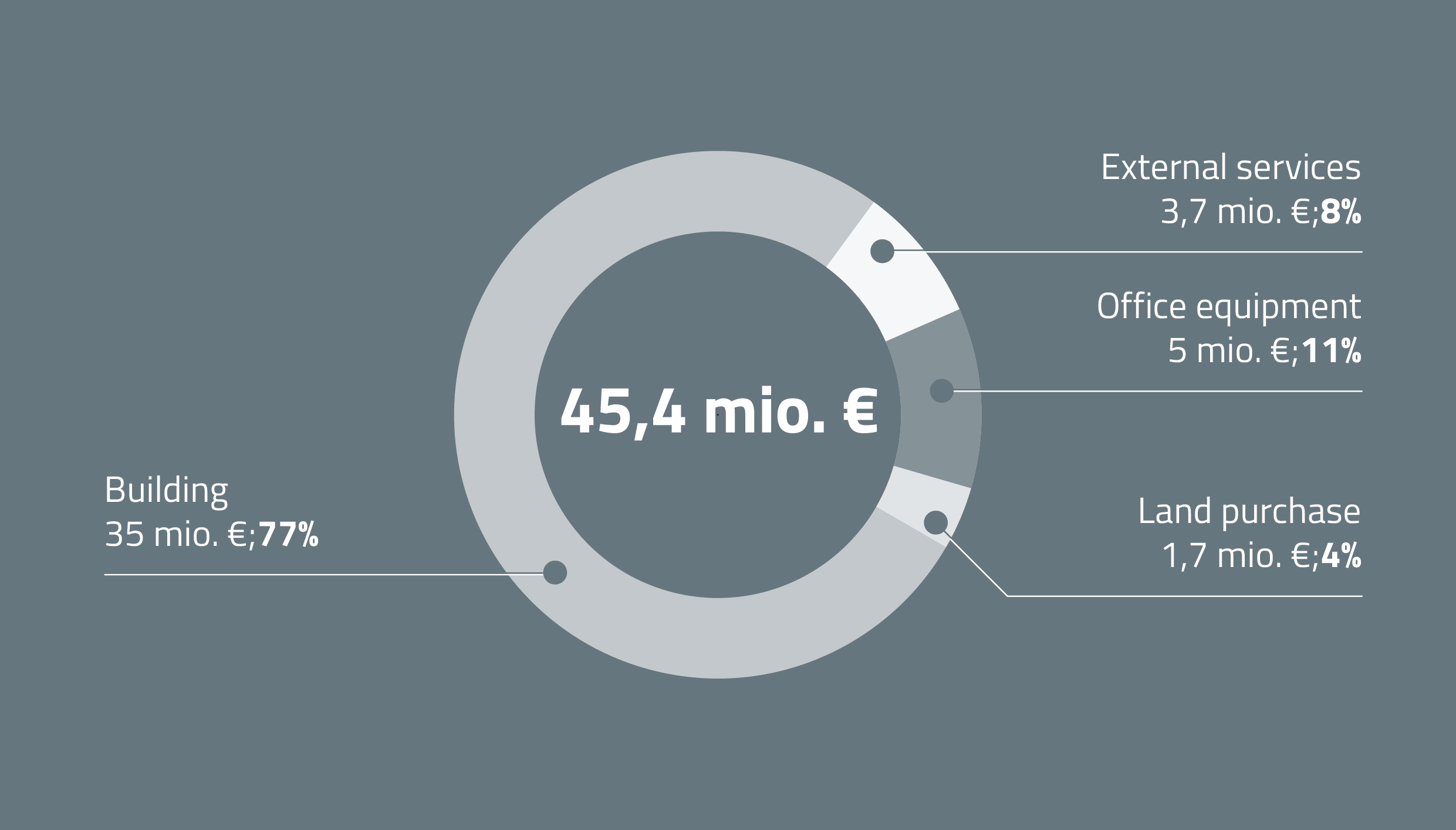

Timeline
2022-2023
Co-creation research with the users, for the users
2025
Public procurement for preparing the project documentation for new research facility: IJSPLUS
Timeline
2022
Co-creation research with the users, for the users
2025
Public procurement for preparing the project documentation for new research facility: IJSPLUS

